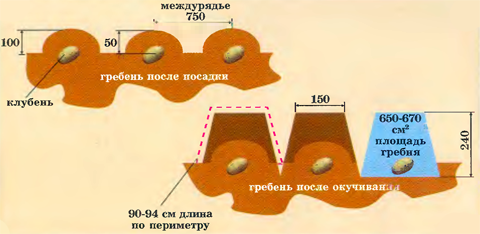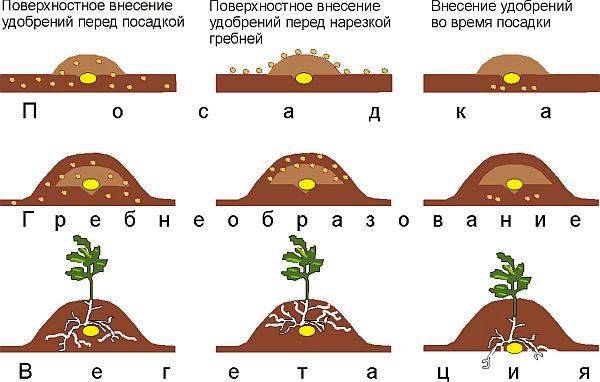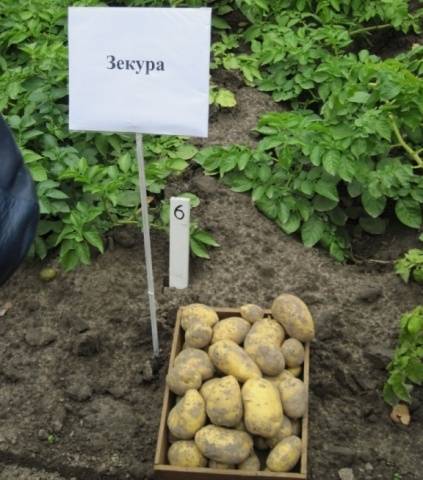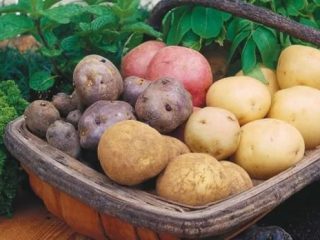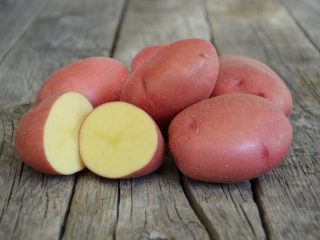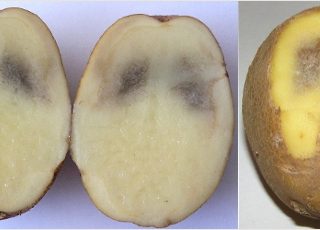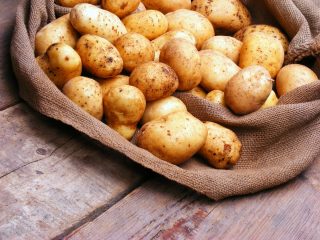Content
Potatoes are one of the main crops and are grown in huge quantities. Zekura is the variety that combines not only high yield, but also excellent taste. Thanks to this, it has become widespread throughout the world.
Origin story
The Zekur potato was bred by German breeders. The purpose of their work was to obtain a variety that would meet the following criteria:
- short ripening period;
- fairly high resistance to diseases, pests and adverse environmental conditions;
- good taste;
- long shelf life of potatoes.
After a few months, and maybe years of painstaking work, the Zekura variety was bred, which has been successfully grown in Russia and the CIS countries for more than 20 years.
Description and characteristics
Zekura is a medium-sized potato bushes, the flowers and base of the stem of which are purple or reddish in color. The main characteristics of the variety are presented in the table.
Tubers | They have an oblong shape, the eyes are hardly noticeable, the peel is smooth, light yellow in color. |
Starch content | 13-18% |
Tuber mass | 60-140 g |
Number of tubers per bush | 15-19 |
Yield | 350-370 centners of potatoes per hectare |
Keeping quality | 97-98% |
Disease and pest resistance | Average resistance to common scab, leaf-roll virus, late blight |
Resistant to adverse conditions | Drought tolerance |
Tuber ripening period | 3-3.5 months after planting potatoes |
Bush height | 30-35 cm |
Spreading of the bush | Minimum |
Shelf life in a dark and ventilated area | From 4 months to half a year |
Recommended regions for cultivation of the variety | North Caucasian, West Siberian, Far Eastern, Central Black Earth, Middle Volga |
Another distinctive feature of the variety is the taste of Zekura potatoes. When cooked, it practically does not boil over and has an excellent taste.
Advantages and disadvantages
The main advantages of the Zekura variety include:
- disease and pest resistance;
- unpretentiousness to environmental conditions;
- high percentage of keeping quality;
- root crops are even, smooth, without roughness and flaws;
- great taste, allowing potatoes to be used for mashed potatoes, stews and soups;
- the possibility of planting in many climatic zones;
- high productivity.
This is one of those varieties that tolerates drought well. However, in hot periods of the year, it is necessary to ensure proper watering of the potatoes, otherwise the tubers will be very small due to lack of moisture.
Otherwise, the root crop has no obvious shortcomings, this once again confirms that Zekura is deservedly included in the list of the best varieties.
Landing
Since Zekura potatoes have good disease resistance, no special processing of root crops is required. The only rule before planting is to remove all spoiled tubers and germinate the eyes within 14-18 days.
In the fall, it is necessary to prepare the site for planting and dig up rows of 30-35 cm.Zekur potatoes should be planted at a time when the soil temperature at a depth of 15 cm will not be lower than + 10 ° C. It is best to do this at the end of April or in the first half of May ...
Potatoes are planted in rows at a depth of 8-11 cm and about 35-38 cm apart. 2 tubers are placed in each hole. And already 20-30 days after planting, sprouts appear above the soil surface.
Care
In general, Zekura potatoes are unpretentious and do not require special care. At the beginning of summer, during the period of rapid growth of weeds, it is imperative to weed the rows, and after the appearance of the first shoots, to huddle the bushes. This will prevent the root system from drying out during dry periods of the year, and will also make the arrangement of tubers more compact relative to each other.
In the future, you need to carry out regular removal weeds and loosening of the surface layer of the soil, about 3 times during the entire growing season.
Despite the fact that Zekura is a drought tolerant variety, it is recommended to water the potatoes once a week in extreme heat. In the absence of rain and low air temperature, you need to dig a hole 15-20 cm deep next to the bush. If the soil is wet there, watering is not carried out. If the ground is dry, pick up the hose or turn on the irrigation system.
Hilling and feeding
Hilling is one of the main techniques in the care of Zekur potatoes. Sprinkling earth on the lower part of the bush and forming ridges should be carried out about 3 times during the entire season. This is necessary for better aeration of the soil, protection of the root system from drying out and the formation of more tubers, which means a higher yield.
Since Zekura does not differ in the large size of the bushes, hilling is carried out easily. To do this, it is better to use small hoes or hoes, and the procedure itself should be carried out early in the morning. The soil must be moist, hilling dry soil can lead to severe damage to the roots and stolons of the potato.
Zekura responds favorably to feeding with organic and mineral fertilizers. Their introduction is carried out if, when digging up the site in the fall or planting tubers in the spring, no additional dressings were added to the substrate.
Fertilizers can be applied in three periods:
- before hilling - a diluted mullein is used;
- during the formation of buds - potash fertilizers with the addition of ash;
- during the flowering period of potatoes - it is better to use superphosphate or mullein.
When applying fertilizers, it is imperative to take into account the stage of growth of the plant, as well as its condition, the rate of growth of the vegetative mass.
Diseases and pests
Zekura potatoes are resistant to a wide range of diseases and pests, including rust, late blight, scab, leaf-rolling virus, black leg. Despite this, there are often cases of damage to bushes by the Colorado potato beetle, bear, scoop caterpillars, and wireworm.
To destroy the Colorado potato beetle, it is recommended to plant calendula between the rows of potatoes, and also cover the soil with wood ash. As a preventive measure for the appearance of pests and the development of diseases, it is necessary to carry out regular weeding and loosening of the beds, add ash and lime after digging the site. Also, observe the watering regime, do not allow waterlogging or strong drying out of the soil.
Harvesting
Harvesting is carried out from mid-August to the second decade of September. For the subsequent storage of potatoes, you need to disinfect the store, dry it and, if possible, ventilate it. The potatoes should be sorted out, removing all tubers with signs of disease or damage.
Conclusion
For 20 years now, Zekura potatoes are rightfully considered one of the best varieties and this is no accident.Easy care, resistance to pests, high yields and excellent taste make it more and more popular for growing in their gardens, summer cottages and backyards.

